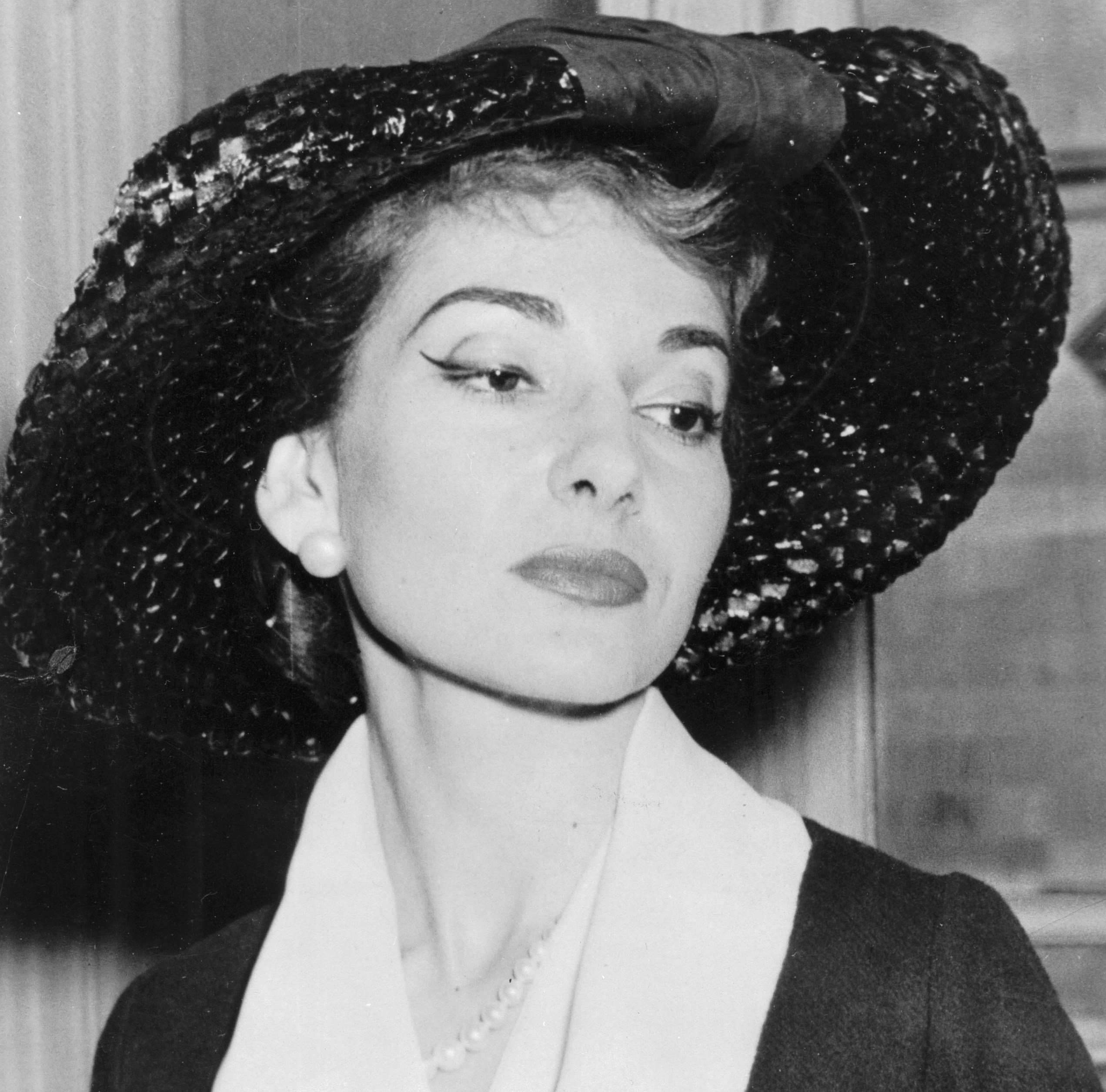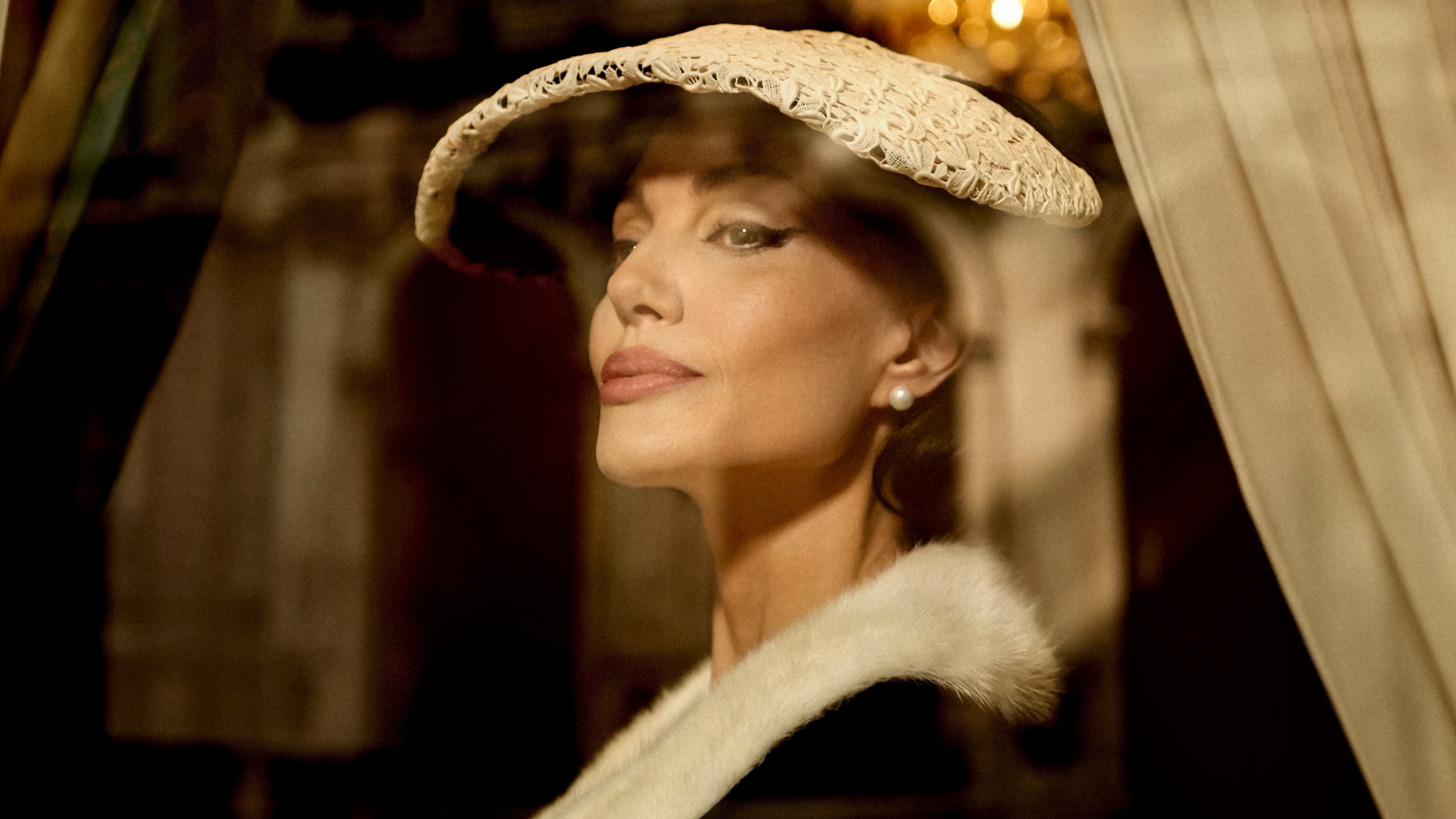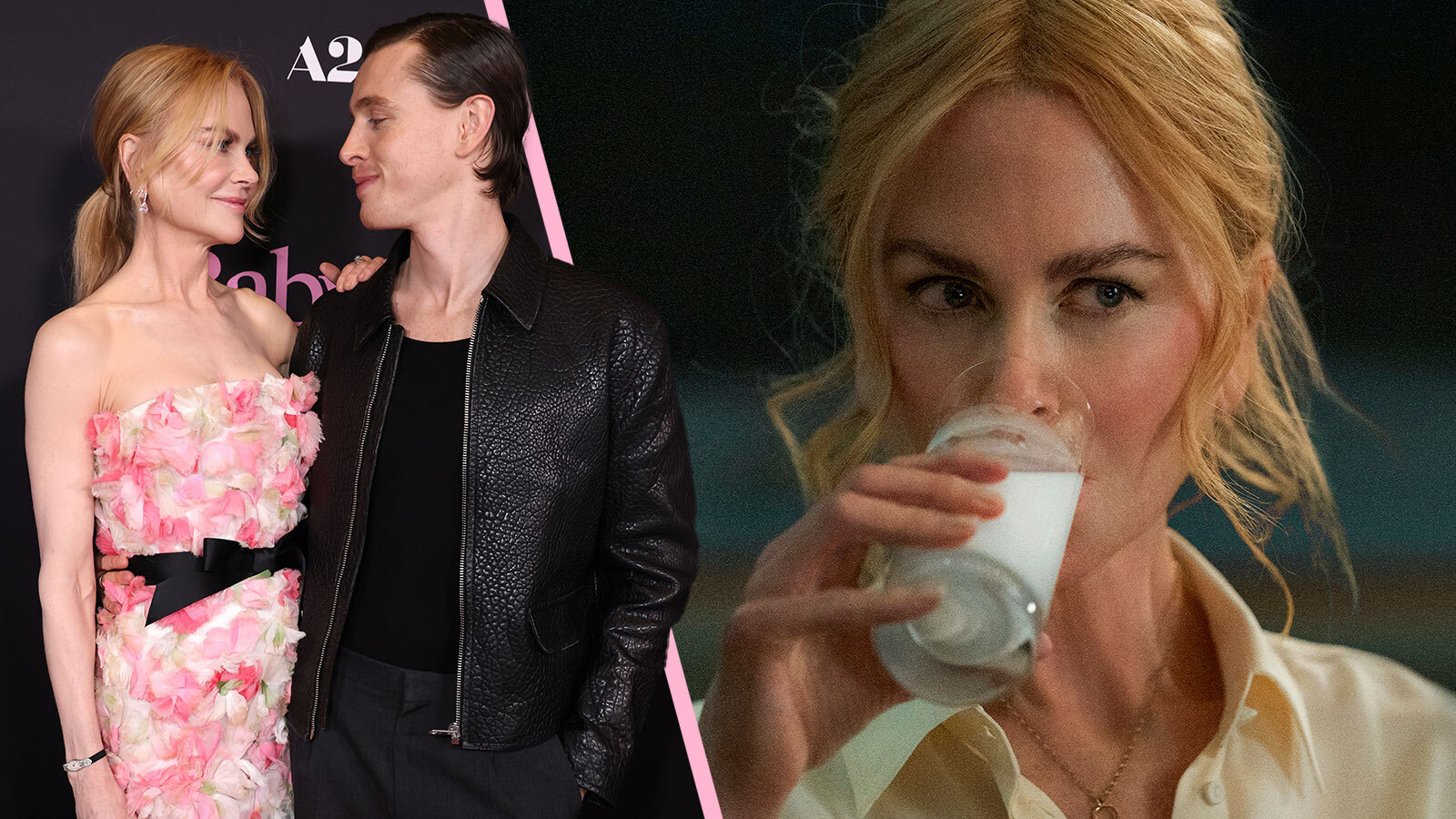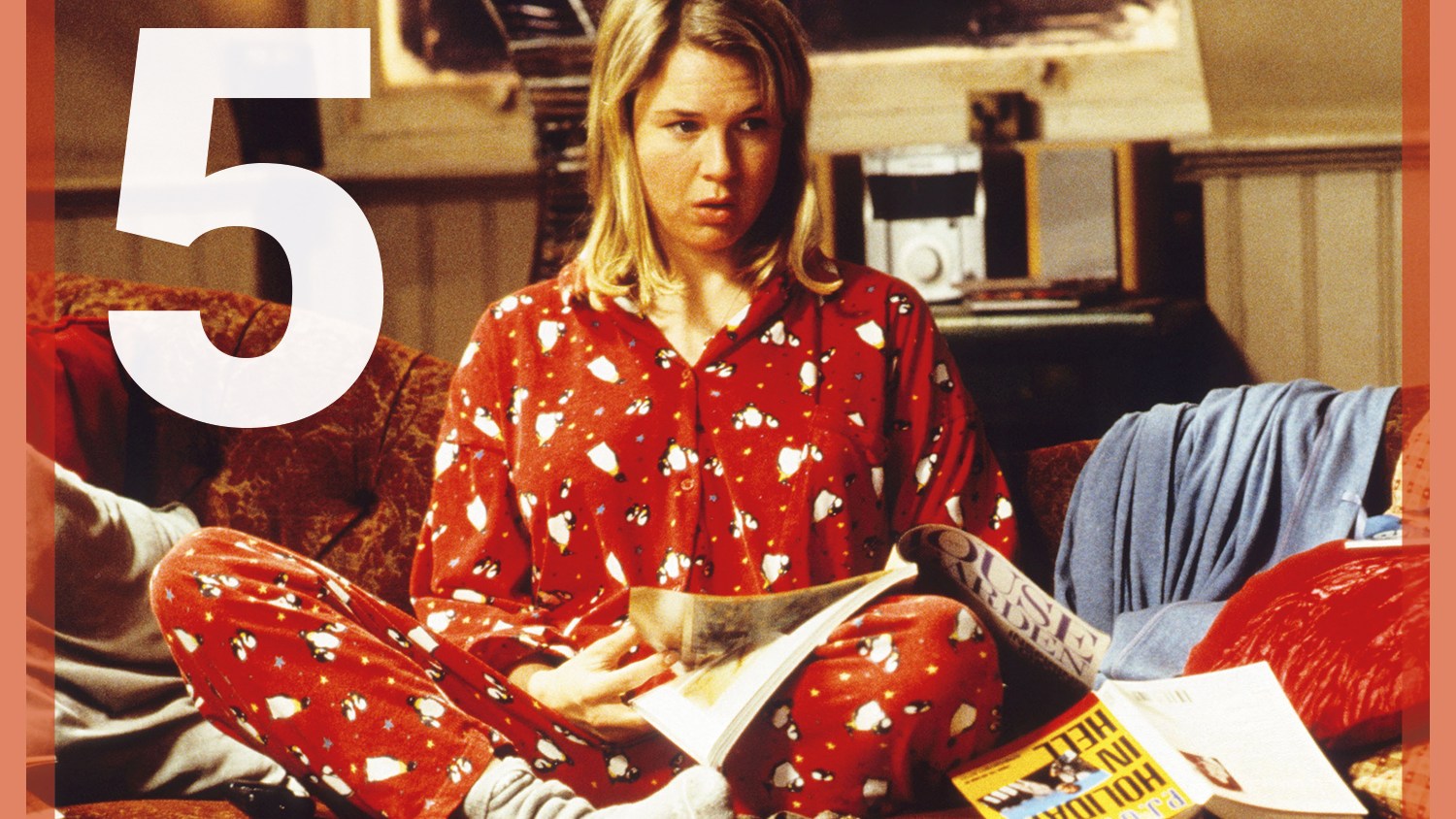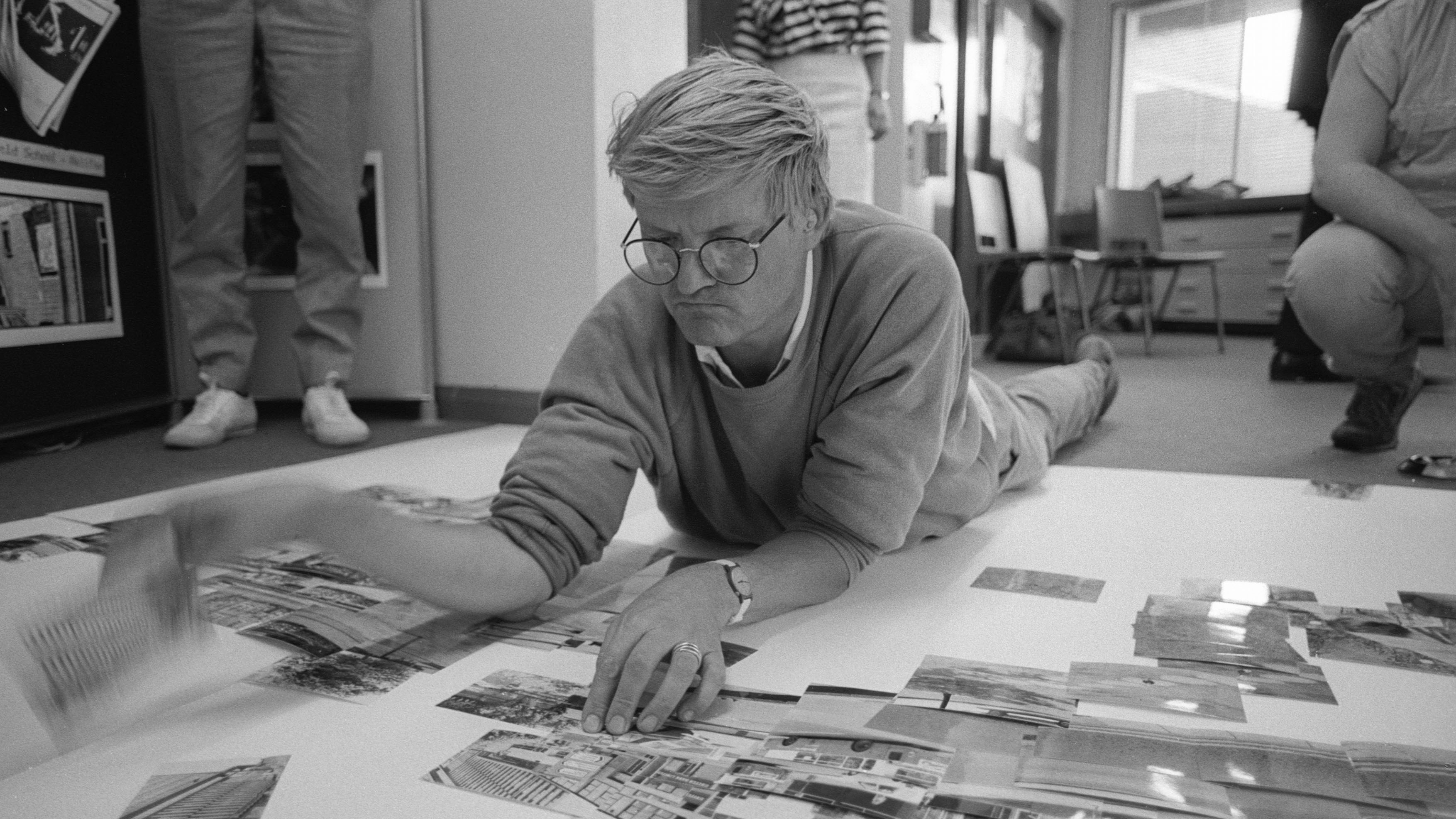On the first day working on her new film about Maria Callas, Angelina Jolie had a singing lesson to get into the character of “La Divina”. She took a deep breath but instead of notes coming out, she burst into tears. “It was the therapy I didn’t realise I needed,” she says. “Singing opera requires you to be as emotionally open as you possibly can be — it’s not like singing in the car. It’s cathartic. I’ve never pushed myself or opened myself up in that way, that was daunting.”
Maria is a comeback of sorts for Jolie. Her previous film role was as a demigod in the critically panned Marvel superhero saga Eternals in 2021. Now she “prefers directing”, she tells me, and she took “some time” to consider whether to accept the role when Maria’s director, Pablo Larraín, offered it to her. She is in nearly every scene and there are parallels with her life as a woman in the spotlight, inspiring adoration from fans who feel like they know her but also facing pressure to shine (and not age).
Comparisons have been made to Last Tango in Paris, a film that could also be seen as being about Marlon Brando’s tough guy image, or Limelight, in which Charlie Chaplin reflected on celebrity and failure. But Jolie shakes her head when I ask if the depiction of fame resonated — Callas is universally adored but also chronically lonely. “I don’t feel that because I have family. Maria didn’t have a family, so her work was everything. My work is not everything. Being a parent is everything.”
Jolie, who has six children, says that she is “grateful this film gave me a time to stop and learn and listen and appreciate”. This isn’t just the Hollywood star rolling out meaningless Californian affirmations — she has had a lot to contend with, not least her legal face-off with her former husband Brad Pitt, which has been running since their separation in 2016 (they divorced in 2019). Next year they will meet in court in a dispute over ownership of their French vineyard, Château Miraval, where they were married in 2014, back when they were known as “Brangelina”.
Three years ago Jolie sold her 50 per cent stake in the vineyard; Pitt argues that this was in breach of an agreement that he should have first refusal on her share. Meanwhile Jolie’s lawyer counterargues that Pitt is trying to bury allegations that he was abusive, pouring alcohol on the family on a flight. He has admitted in interviews that he had an alcohol problem (he is now sober) but has always denied being physically abusive. At least two of the couple’s children, Vivienne, 16, and Shiloh, 18, have dropped Pitt’s surname.
Advertisement
• Who is Akala, Angelina Jolie’s new man?
All of this makes it unsurprising that the actress, 49, is somewhat guarded — there is a lot she cannot discuss for legal reasons. Still, she is unpredictable company. She clams up at some of my questions — calling one of them “insane” — but will also break into spontaneous laughter.
Her appearance adds to the sphinx-like impression. It’s been pored over — she has consistently denied having any work done but that hasn’t stopped in-depth debate over whether she’s had plastic surgery since she became a household name in films such as Girl, Interrupted in the Nineties. In real life, her features are even more cartoonishly pronounced than in photographs — with plump lips, apple cheeks and round grey-blue eyes accentuated with a Cleopatra-like-flick of eyeliner.
In Maria, Jolie’s character is bullied for being fat but Jolie stands tall and angular with a boost from white platform shoes. She wears what look like expensive pyjamas — white silk flared trousers and a black kimono top, tied loosely to reveal a tattoo of a swallow across her chest.
We are joined in the hotel room by Larraín, who knew he wanted to cast “Angie” when he had the idea for the film, and tempt her away from directing. Her latest film is Without Blood, an antiwar drama she directed and adapted from a novel of the same name, starring her Eternals co-star Salma Hayek, which has yet to get a release date. It’s consistent with her humanitarian work; she has spent two decades campaigning for human rights in countries such as Syria, Sierra Leone and Afghanistan, including as a special envoy of the United Nations high commissioner for refugees. “Know your rights”, the title of a Clash song, is tattooed on her back.
Advertisement
• Angelina Jolie ordered to spill secrets of her Hollywood lifestyle
She’s most at ease talking about the international aid branch of her life. When a publicist comes to tell her that he will be taking her to her next appointment, to have some pictures taken, she eyes him sceptically. Then she remembers something. “Oh, is Giles taking the photos?” He is. She becomes more animated than she has been all interview. “He’s my friend,” she tells me proudly. “He lost his arm in a landmine explosion and he does everything amazingly — he takes photos; he’s a better cook than I am.”
“You can feel the enormous amount of humanity Angie carries,” Larraín says, in luvvie mode. “It’s odd to discuss this in front of Angie but I think being a diva is related to having a strong vision of the world and your own work. Angie could relate to that in Callas.”
Maria, out this month, is the third film Larraín has made about pivotal moments in the lives of famous yet damaged women — there was Jackie in 2017, starring Natalie Portman as Jacqueline Kennedy, and Spencer in 2021, with Kristen Stewart as Diana. Maria is about the stellar soprano in her final days, before she died of a heart attack aged 53 in 1977.
Having lost the ability to sing like she used to, Maria spends her days in a palatial Paris flat with two poodles, subsisting on a cocktail of drugs, knocked back with Fernet-Branca liqueur. She hallucinates that a journalist called Mandrax, named after her favourite sedative, comes to make a documentary about her, which sparks flashbacks. In a script by Steven Knight (Jolie says she enjoys his show Peaky Blinders), we see her unhappy childhood in 1940s Athens, where she came to despise her mother for forcing her to sing for money; how she fell in love with the “ugly”, as she calls him, millionaire tycoon Aristotle Onassis, who forbade her from singing and eventually left her to marry Jacqueline Kennedy.
Advertisement
But while Callas thinks ageing means her power is waning, Jolie is defiant. “I’ve got better work as I’ve got older,” she says. “I don’t think about it in terms of roles offered but in terms of life experience you contribute. It’s easier for actors than singers or dancers because your body doesn’t change.” Admittedly that last sentence is only true if you look like Jolie.
• The night Maria Callas made a pass at me
Her sons Maddox, 23, whom she adopted from Cambodia, and Pax, 20, who is also adopted and Vietnamese, worked on the film as production assistants and it allowed them to have some meaty discussions about Callas’s dynamic with her mother and Onassis. “They were able to consider the relationships in the film and the violence — things that sometimes you don’t have the opportunity to discuss with your sons, so I felt fortunate.”
Jolie and her family live in Los Angeles, near where she grew up in Hollywood. She was close to her mother, Marcheline Bertrand — whom she says was a total contrast to Callas’s and got her interested in human rights. Bertrand trained as an actress but wasn’t able to work because she had to bring up two children on her own, after their father left when Jolie was a baby. She died of ovarian cancer in 2007 aged 56. Jolie’s father is the Midnight Cowboy actor Jon Voight, who is now a Trump supporter and has criticised Jolie’s support of Palestine, accusing her of having been “influenced by antisemitic people”.
If she didn’t see eye to eye with Callas’s fear of ageing, what Jolie did relate to was Callas’s “commitment to her work”. Callas was called a diva and Jolie wants to reclaim the word from having negative connotations, especially when used towards women. “I’m a hard worker,” she says. “And a deeply feeling person. Maria is vulnerable because she feels and isn’t sometimes able to protect herself from the loneliness or emotional pain. Because it’s part of her life and work to be extremely human and live that way.
Advertisement
“You live through your communication with the audience. For Maria and for me that has always been extremely important.”
But what about if those audiences then want to know all about your relationships — that must be hard? Jolie nods but gives me a warning look as if I’ve said enough.
• Why we love Maria Callas: five top opera singers on their icon
When Jolie started out she was a hardcore Method actress. While shooting the film Gia she told Jonny Lee Miller, her husband at the time, that she wouldn’t be able to phone him while on set because she was in character, as a supermodel turned heroin addict — and afterwards briefly gave up acting because she felt she had “nothing else to give”.
“As a young actor you say yes to everything,” she says now. “Can you ride horses? Can you speak this language? Then you have to learn.” For Maria she spent seven months doing intense singing lessons, as well as taking Italian classes. The score mixes her voice with Callas’s to impressive effect.
Advertisement
For Larraín, 48, the film started with the music. His mother, a politician in Chile where he grew up, used to take him to the opera as a child. “I was a lucky kid,” he says. “But then we’d go home and my mum would say, ‘That was lovely but here is the real thing,’ and play a cassette of Callas, so I grew up with this figure. Then later I learnt more about her life and thought it was a challenging subject.”
He thinks Callas would have been treated differently if she were a man. “She was a strong woman at a time when that wasn’t really tolerated,” Larraín says. “But this movie is also an act of respect to her — she was stoic and strong, she was betrayed but she always stood on her own two feet, trying to do her art until she couldn’t.”
Has he ever sung? Jolie finds this hilarious. “Yeah, Pablo,” she says. “I feel you owe me that.” He says it’s “not going to happen”.
They would like the film to change the way opera is perceived. “Angie and I often talk about Callas’s music bringing opera to more people,” he says. “Maria Callas cared about the art form but she also wanted to connect with people. So hopefully this can get rid of elitism and bring people back to opera.”
So what would a Larraín biopic about Jolie be like? That’s when I get full scorn. “That gets the most insane question award,” Jolie says and she and Larraín laugh for slightly too long. “When you’re a public person and you’re playing her, you’re conscious of how you would hate for somebody to interpret your life or think they understand your life, so we tried to be thoughtful. Let’s hope there isn’t one about my life.”
Top 6 Maria Callas performances — the critic’s choice
by Neil Fisher
1. Io son l’umile ancella, from Adriana Lecouvreur
From a talismanic 1955 album in which the diva’s powers are at their height, this is the three minutes and 30 seconds that put me under Callas’s spell. She is singing the role of a famous actress who protests that she is merely “the humble handmaiden” of her art. And Callas does this while singing in a kind of mesmeric trance that suggests it really is true — she is the servant of higher, unearthly powers.
2. È strano! Ah, forse è lui, from La traviata
Choose from more than half a dozen recordings of Callas’s Traviata, most of them bootlegs that opera buffs used to snuffle around for like truffle hunters. The remastered 1958 Covent Garden recording has a special atmosphere, though, and Callas’s portrayal of Verdi’s consumptive courtesan has almost unbearable pathos.
3. Una macchia, from Macbeth
Callas at her darkest, and fiercest: Verdi wanted his Lady Macbeth to make an “ugly” sound when required — and Callas responds to that challenge with a sleepwalking scene in which she’s not afraid to sound guttural, hoarse, hollowed out. She is a haunted murderess who will chill your blood but also sounds pathetically vulnerable.
4. O mio babbino caro, from Gianni Schicchi
Time for a hit of pure sunshine. Puccini’s much loved, even ubiquitous aria is often just a trusty encore, but Callas floods it with light, with a vocal “smile” that carries through across the decades.
5. Col sorriso d’innocenza, from Il pirata
A Bellini mad scene that captures Callas not in prime vocal health for this challenging bel canto repertory, but, live in concert in Amsterdam in 1959, the sense that her voice is on the edge simply makes the characterisation that much more intense. Callas brought this opera back from obscurity virtually single-handedly. Listen and hear why.
6. Una voce poco fa, from Il barbiere di Siviglia
It’s operatic champagne — or a most superior prosecco — as Callas delivers all the comic bravura and pinpoint vocal flourishes of Rosina from The Barber of Seville. Angelina Jolie’s lachrymose movie may be all about Callas’s final tragic act but this is a fizzing reminder that the lady must have had a cracking sense of humour too.
Maria is in cinemas from January 10
What’s your favourite performance by Angelina Jolie? Let us know in the comments below
Follow @timesculture to read the latest reviews






